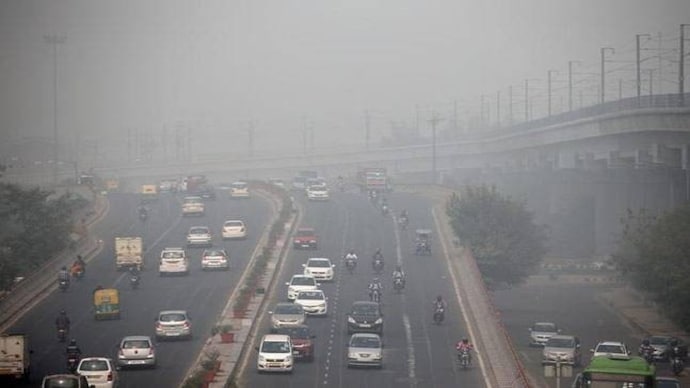Ban on stubble burning not a long-term solution to fight smog, says Delhi think tank
Indicus Foundation, a Delhi-based think tank, has come up with a study that shows a ban on stubble burning in neighbouring Punjab and Haryana is impossible to execute and not a long-term solution to end the threat of smog pollution.

In Short
- Odd and even system to regulate traffic will also not end pollution: Think tank report.
- More than half of the vehicular pollution is caused by two-wheelers, adds report.
- Experts: Asking NTPC to use stubble as biomass to generate fuel won't solve the problem.
Delhi Chief Minister Arvind Kejriwal recently met his Haryana counterpart to discuss ways to deal with smog pollution due to stubble burning by farmers. But this seems unlikely to prevent Delhi from turning into a gas chamber. Experts suggest long-term measures to free the capital from smog.
Indicus Foundation, a Delhi-based think tank, has come up with a study that shows a ban on stubble burning in neighbouring Punjab and Haryana is impossible to execute. Experts say that the Centre and states should instead focus on discouraging paddy cultivation.
The think tank has come up with a set of recommendations to fight Delhi's pollution. It has suggested that sowing of other crops be incentivised and paddy cultivation discouraged, low sulphur, petrol and diesel be imported or bought, local police and municipal officers be held responsible in case of solid waste burning, and economic activity without access to an economically viable substitute be banned.
The report says odd and even system to regulate traffic will also not work. Focusing on four-wheelers or commercial vehicles will not solve the problem as more than half of the vehicular pollution is caused by two-wheelers, the report suggests.
Experts say that asking the National Thermal Power Corporation (NTPC) to use stubble as biomass to generate fuel will not solve the problem unless the power plants are not upgraded.
Dr Laveesh Bhandari of the Indicus Foundation told India Today, "You need to make some investment in the cleaning equipment because cleaning required for coal is a bit different from cleaning required for biomass. In a sense the emissions will have higher ash content. Our coal power plants right now are not built for that. They will need to make some changes."






WHAT DO EXPERTS SAY
Experts say emergency measures pressed into action have an effect for a limited period. Policymakers will need to address pollution as a round-the-year problem and not just limited to the onset of winter.
Vivek Chattopadhyay, a researcher at Center for Science and Environment said, "We have seen Delhi experiences clean air days only during the monsoons. The remaining part of the year is very heavily polluted so the strategy should be to have a long-term action plan, which requires time-bound action at every step throughout the year so that we don't reach a crisis situation."
Delhi has 8,686 km of kuchcha (non-concrete) roads and generates 12,000 tonnes of solid waste every day, and most of it goes to overflowing landfills.
As many as 42.3 lakh two and three-wheelers account for 56 per cent of PM due to vehicles. Experts say that these figures suggest Delhi's smog is more of a home-grown problem.
ALSO WATCH VIDEO | Delhi pollution: Kejriwal, Khattar say they'll work together to tackle smog
